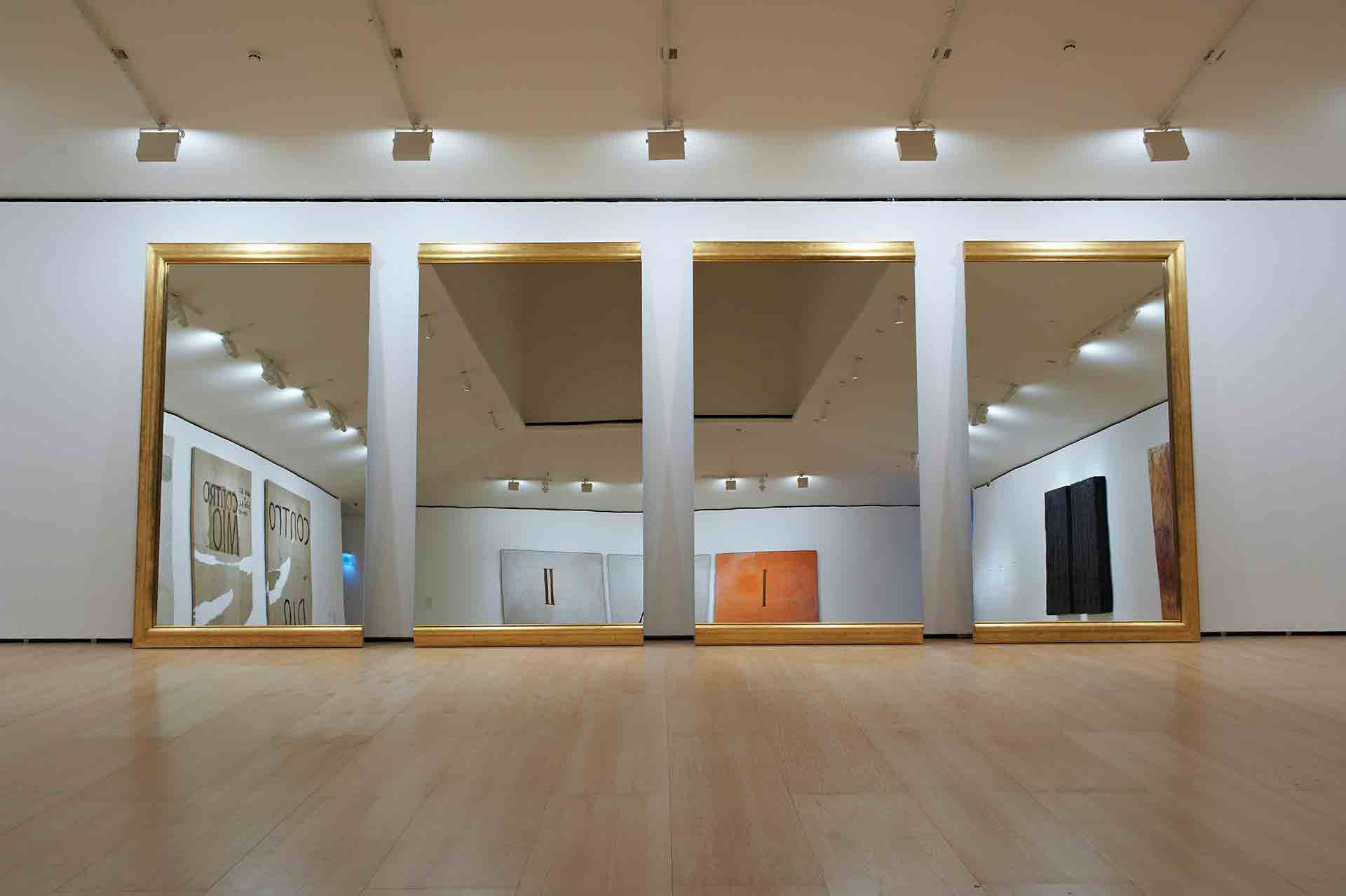
Mirror Architecture (Architettura dello Specchio)
"I can see myself, or perhaps I can't see myself, while you can see me in the mirror. But it's not just us or whoever is in front of it now, he who is distant is also in the mirror. Indeed we are in the mirror even when it's not in front of us. Nothing escapes the mirror. The great space is in the mirror, time (whole time) is already in the mirror and space has the dimension of time."10
Michelangelo Pistoletto, Mirror Architecture (Architettura dello Specchio), 1990
Michelangelo Pistoletto (b. Biella, Italia, 1933-) was born in a house where art was part of daily life. His father was a painter who ran an art restoration workshop and he taught his son to draw at a very young age. When Pistoletto turned fourteen he started working at his father's side. During the 1950s he adopted a figurative style, applying it to many self-portraits. Since the beginning of the 1960s, the artist has evolved his figurative painting and self-portraits onto monochromatic, metallic backgrounds. Later pieces combine photography and collage, and include reflective backgrounds. He also employed concave or convex distorting mirrors that create a game of sorts with the viewer, whose reflected image is enlarged or reduced in comparison with the life-like painted figures. Pistoletto continued exploring the reflection theme and eventually replaced canvas with polished steel, to finally move on to the use of mirrors.
Around 1967 he expanded his work to include performance, film, video, and theater. Pistoletto was associated with Arte Povera, an Italian art movement from the 1960s that incorporates organic and industrial materials in ways that reveal the conflicts between the natural and the man-made. His pieces were distinguished by the use of materials of everyday life such as cloth, wood, corrugated cardboard, and mirrors, among others.
In Architettura dello Specchio (1990), Pistoletto mainly deals with the subject matter of reflection and the absence of it, a theme that is central to many of his works. He has said that his mirror paintings were the foundation of both his subsequent artistic production as well as his theoretical ideas and writings.
10. Museu d'Art Contemporani de Barcelona, Michelangelo Pistoletto
Preguntas
- What do you notice?
- Why might an artist choose to use a fractured mirror to create a work of art?
- The piece was intended to “interact” with the architectural setting where it is displayed, as well as with the viewer and his/her reflection. How does the architecture become a part of this piece? How does the viewer interact with the work?
- Imagine that the work was placed in a different setting: an outside location like a forest, or an interior like a supermarket. How would our perceptions of the piece change?
